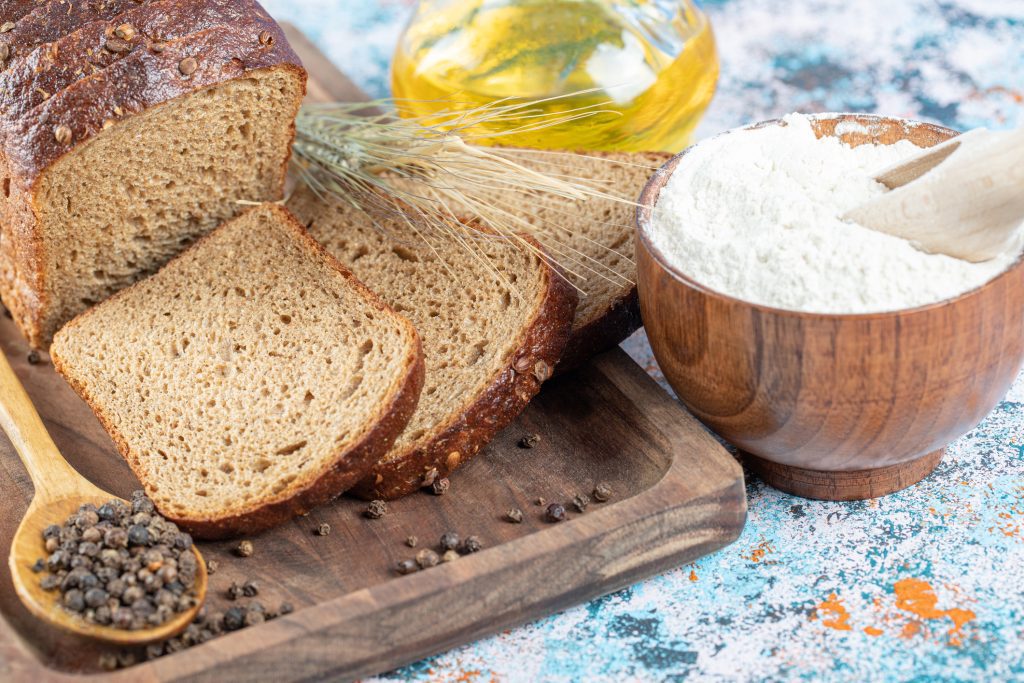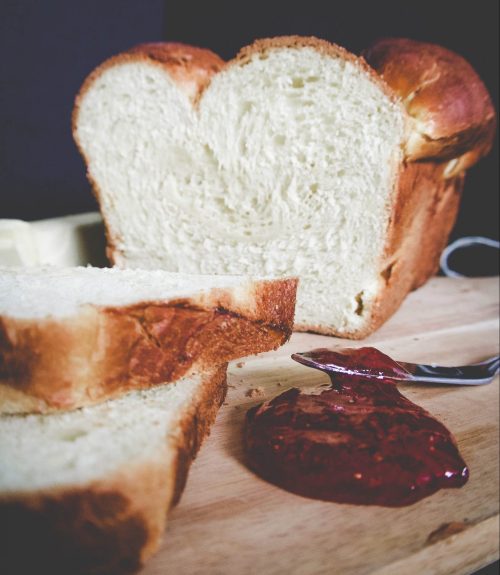While current thinking is promoting whole grain breads and cereals as the better choice for maintaining health, white bread has properties which make it an equally valid choice as part of a balanced diet.
Section Links
Flour, whether white or wholemeal, supplies a large proportion of the nutrients required by our bodies to ensure growth and health.
Flour is used as the basis for many cereal food products including bread, biscuits, pasta, pastries and cakes. The nutrients it contains are continually supplied throughout an average person’s day. Our breakfast, lunch and evening meals usually contain products either based on flour, or thickened with flour.
Flour is an excellent source of protein, vitamins, fibre and complex carbohydrates. It is also low in fat and cholesterol.
Nutritional analyses have been carried out on flour samples from New Zealand flourmills. Samples ranged from flours used in making biscuits through to those used in bread. As flour is the basis of many frequently eaten foods such as bread and pasta, we are easily able to take advantage of its varied nutrients.

Did you know that all bread is nutritious?
All breads are nutritious and the differences between them in nutritional value are not significant if we eat a balanced diet.
White bread has approximately the same carbohydrate and protein content as wholemeal bread, contains soluble and insoluble dietary fibre, and a good percentage of the whole wheat nutrients. It is made from unbleached flour made from the inner 78% of the wheat grain. If you prefer white bread to wholegrain breads, you can get your extra fibre from other foods such as wholegrain cereals.
In New Zealand wholemeal bread is made from at least 90% wholemeal flour. White flour may be added to wholemeal flour to make wheatmeal products. Due to it gluten protein content, white bread is often added to improve the baking quality of breads made with wholemeal flour.
Wheatmeal breads are not subject to food regulations and so the quantity of wholemeal flour used may vary. Nutritional comparisons are therefore difficult to make.

Chemical composition of wheat
The composition of the dry matter of wheat varies widely depending on soil, climate and genetic variations between wheat types. Wheat in New Zealand has a protein content that ranges on average from 8% to 13%. It has a high carbohydrate content of about 83% of the weight of a kernel.
Other components of the wheat grain include bran and germ. Bran, the outer coating or “shell”, is rich in B vitamins and minerals.
The wheat germ or embryo is a rich source of B vitamins, oil, vitamin E and fat. It needs to be discarded during milling because the fat is liable to become rancid during storage. It is still very valuable and is used in many products.
Minerals contained in wheat include calcium, phosphorous, potassium, iron, magnesium and sodium.
Vitamins such as thiamine (B1), riboflavin (B2), pantothenic acid, inosotol, P-aminobenzoic acid, folic acid and vitamin B6 are also distributed throughout the wheat grain.
All the nutrients contained in wheat make bread an essential part of the diet. Bread is one of the cheapest, high quality nutritious foods in New Zealand and not only provides many essential nutrients but is also low in fat, cholesterol and sugar.
How do the nutrients in flour help us?
The B vitamins, niacin, riboflavin and thiamine, are essential nutrients that cannot be made by our bodies in sufficient amounts for our needs. They need to be supplied by our diet and must be consumed regularly as they are not stored in our bodies.
The main function of thiamine is to break down carbohydrates into sugars to produce energy. Riboflavin is necessary for the production of energy in the body and niacin is essential for making use of the energy produced in all cells.
Calcium is an essential mineral for bone production and maintenance of healthy bones and teeth. New Zealander’s are actively encouraged to maintain a reasonable level of calcium intake throughout life. Iron is also an essential mineral required in our bodies. It assists with the transport of oxygen to the cells where it is used. It is part of a pigment called haemoglobin in the red blood cells. Potassium is contained inside the cells of our bodies. It enables cells to have the correct fluid mixture they need to work properly.
Dietary fibre is a mixture of many different components that give a rigid structure to plant cell walls. It helps food pass through our digestion system more easily and has been shown to reduce the effects of some common ailments such as constipation and other similar problems.
Nutrient content is affected by extraction rate (the amount of flour removed from the grain). White flour (usually extracted so that 78% of the grain remains in the flour) contains a lower proportion of some nutrients than 100% extraction rate wholemeal flour. The difference between wholemeal flour and white flour is that the bran and germ layers are removed during white flour milling. Wheat germ is a very good source of B vitamins and extremely rich in iron, zinc, manganese and copper. It is also the richest plant source of vitamin E.
Pure wheat bran is the richest known source of dietary fibre and contains minerals (such as manganese and iron) and vitamins (niacin, vitamin B6).
When you compare white flour and wholemeal flour in the table you will see that wholemeal flour contains on average 3.6 times the quantity of fibre contained in white flour. However, white flour is still a good general source of dietary fibre, and is also an excellent source of other essential nutrients, including carbohydrates, amino acids, magnesium, manganese, phosphorus, potassium, sodium, sulphur, zinc, selenium and lipids.
All flour is nutritious so no matter which type you use it will contribute towards a healthy diet.
Including bread in your everyday eating
Substitution of bread for fats maintains the energy we need to get from our diet by providing carbohydrates rather than fats for energy production. Worldwide, nutritionists and dieticians support this recommendation, and advise that the following plan for good eating is used:
- Eat a wide variety of foods to get a good balance of vitamins and minerals.
- Eat mostly cereals, vegetables and fruit.
- Eat more complex carbohydrates and dietary fibre.
- Eat less fats, refined sugar, salt and alcohol.
When its composition is considered along with its relatively low cost, bread is an ideal food to complement the nutritious fillings we may choose to balance our diet.
Four to six slices of bread daily is the intake recommended for adults.
Always remember though, that overall we are encouraged to eat a variety of foods and that these foods should include breads
- breads – (4-6 slices of wholemeal and/or white per day),
- pasta, fruit(5 servings),
- vegetables (6 servings),
- fish, chicken, legumes, nuts, dried peas/beans, dairy produce including trim milk, cheeses and yoghurts (preferably low fat), eggs and meats.
